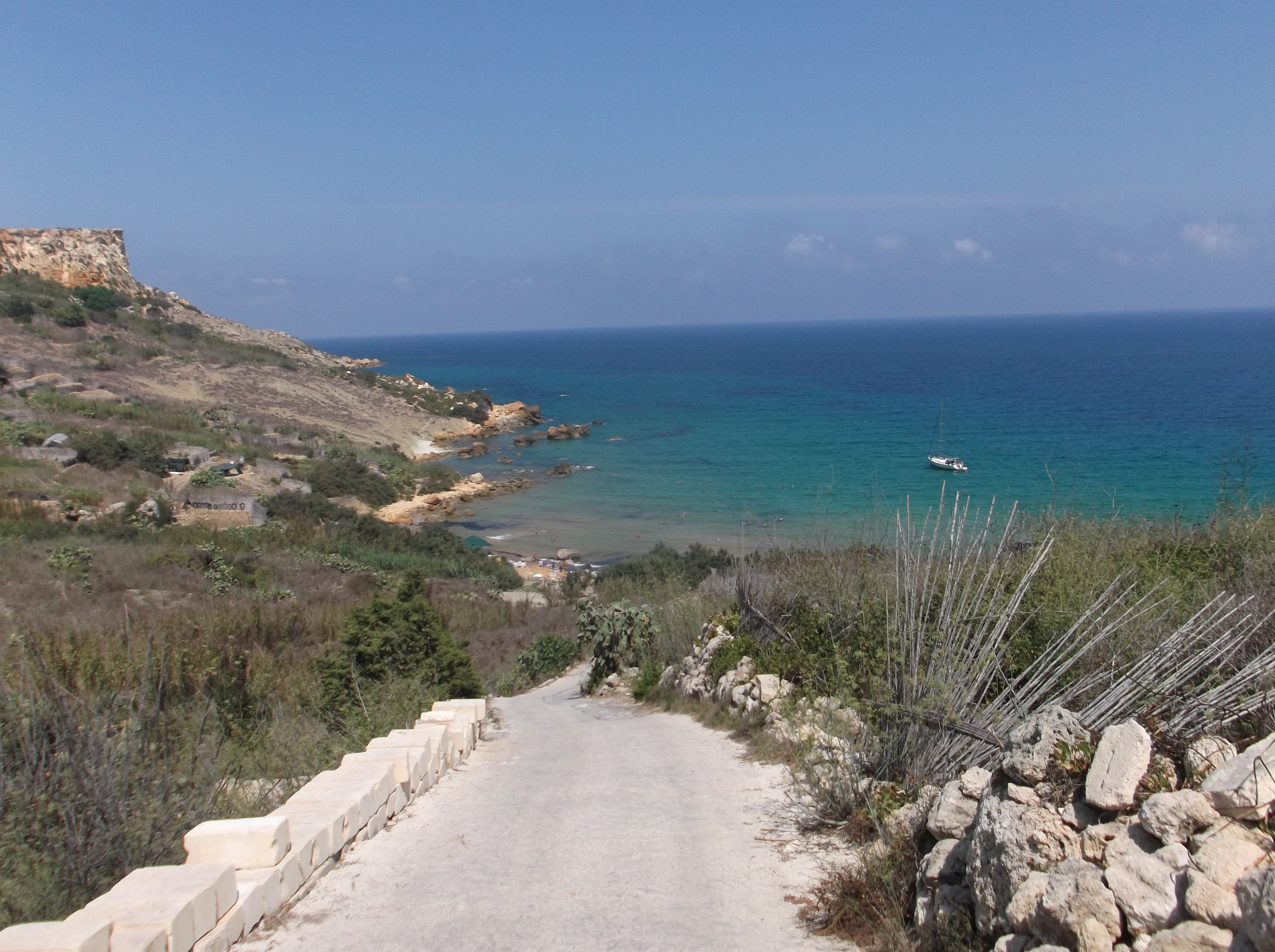Removing sea grass deposits from San Blas beach on the island of Gozo, Malta has become an issue for heated discussions in the local paper.
San Blas is a small cove on the north coast of Gozo with a sandy beach in between rocks. It is a relatively undisturbed natural area, protected under local legislation, and visits are limited as the access road is very steep.
Normally there is some seagrass washed onto the beach which comes from the extensive beds of Posidonia oceanica that are along the coast of the Maltese islands, but nothing to write home about. The accumulation of dead seagrass on beaches in the Mediterranean is a natural phenomenon, and this happens after every storm. A study by the University of Malta (A. Deidun, S. Saliba, P.J. Schembri, 2011. Quantitative assessment and physical characterisation of Posidonia oceanica wrack beached along the Maltese coastline. Biol. Mar. Mediterr, 18 (1): 307-308) estimated that in 2011 some 42,000 cubic metres of seagrass debris is deposited along the Maltese coast at any one time. This seems a lot, but the situation varies from day-to-day according to the wind direction and the force of the waves. From previous visits to San Blass during the past ten years we know only too well that some days there is more grass on the beach than other days.
Last weekend Gozo experienced heavy storms. Sadly, two swimmers lost their lives due to the strong currents and waves, but the weather also played havoc with some of the beaches. The storm caused so much vegetation to wash onto San Blas beach that heavy machinery was deployed to try and clear it, and this was as far as I know the first time this was done in San Blas Bay.
The use of heavy equipment did not seem to be the answer, as there were still a lot of weeds floating in the water, and the work generated an enormous mountain of dead vegetation, which had to be piled up on the rocks. And, in the process of scooping up the sea grass, a considerable amount of the sand also disappeared.
Cleaning up beaches is a common action for tourist locations, but a recent report from Sardinia suggests that any removal of seagrass deposits from the beach is not good for the ecosystem and may affect the morphology of the beach. (Simeone, S., De Falco, G. 2013. Posidonia oceanica banquette removal: sedimentological, geomorphological and ecological implications. Proceedings 12th International Coastal Symposium (Plymouth, England), Journal of Coastal Research, Special Issue No. 65, pp. 1045-1050, ISSN 0749-0208.)
The San Blas issue has generated a heated discussion in the local papers, with comments in support and against the action. The reality is that the exercise was not successful as one week later, there is less sand along the beach and there is still a lot of seaweed.
The big question is: What would have been the alternative? Removal by hand would have been difficult as the bank of sea grass was at least one metre high. What to do with the pile of dead leaves? There is talk of using the dead seagrass leaves for bio-energy (a next research project for the University of Malta?), but that would have required transport from the beach to another site. Put it on a barge and dump it back out to sea? It would be washed up at the next strong wind.
So – maybe the simple answer is to leave the beach alone. Inform the tourists that the washing up of dead seagrass leaves is part of a natural cycle, that seagrass beds are very valuable for all kinds of reasons and that the dead leaves will wash away again at the next storm. It may deter a few visitors, but I guess that most tourists will be happy if there is access to the sea, and enough sand left to lay their beach towel.




Dear Bruce
I have no idea! Sorry, I am not a horticulturist!
Best regards
Hans